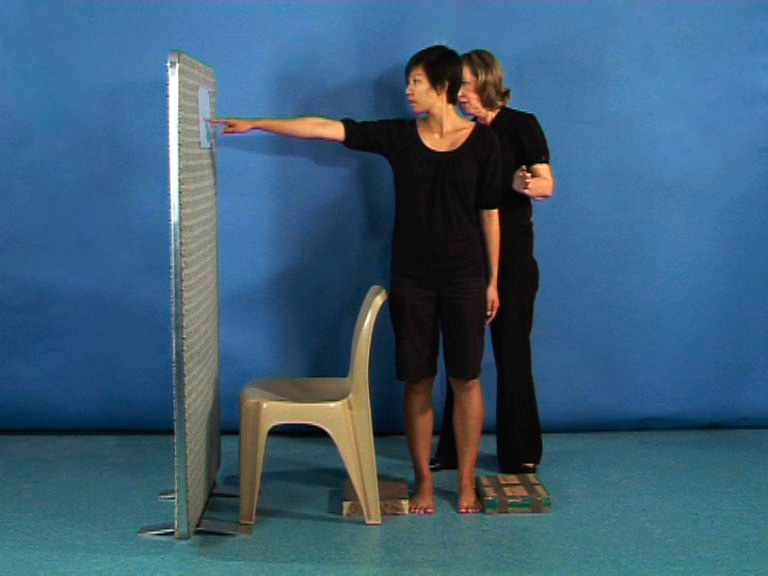AIM:
To improve spatial accuracy of reaching in standing tasks
Rationale:
Practice is set up so that excessive movements are constrained and feedback about accuracy is implicit in the task.
Equipment:
- Blocks or telephone books
- Chair or small table
- Target on wall
Key Points:
- Blocks are set up to constrain foot position while reaching
- The chair (or table) is positioned to indicate how far the patient is to move the hips to the side
- Ensure the patient looks towards the target while reaching
Common Errors:
- Patient moves the shoulders but not the hips to the side
- Patient moves excessively at the hips resulting in the chair (or table) being displaced
- Patient moves feet, displacing blocks
- Patient moves too far to the side and leans on the wall.
- Therapist sets up the exercise so that it is not possible to complete the task without excessive shoulder movement or stepping to the side (even for a person without ataxia)
Progression and Variety:
- Increase speed
- Increase reach distance
- Vary the base of support
- Vary the direction of the reach to forwards or diagonal
